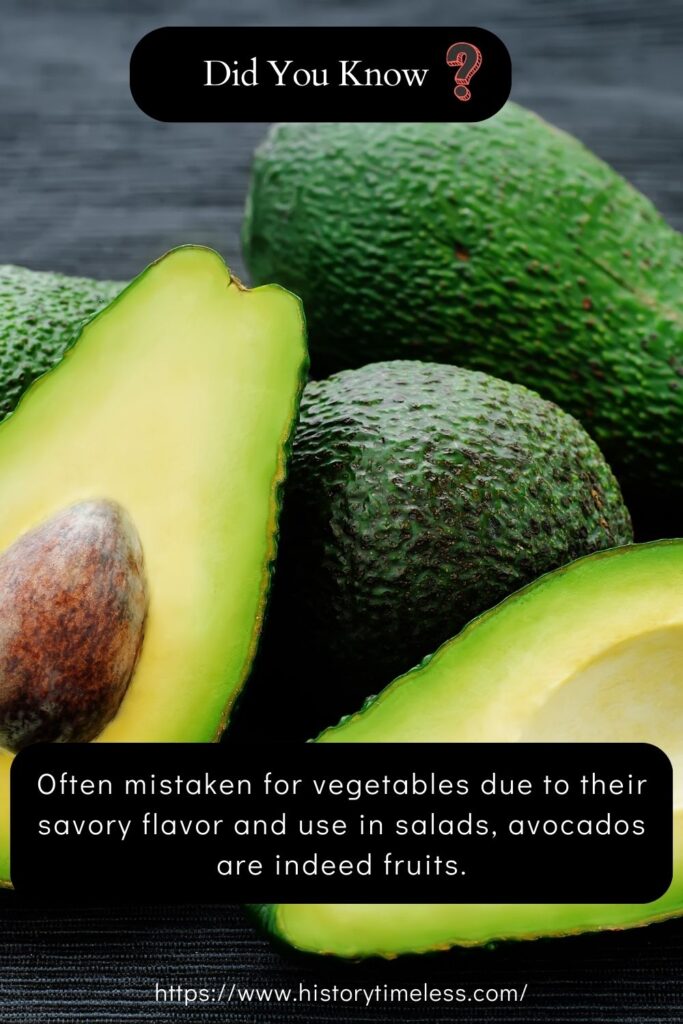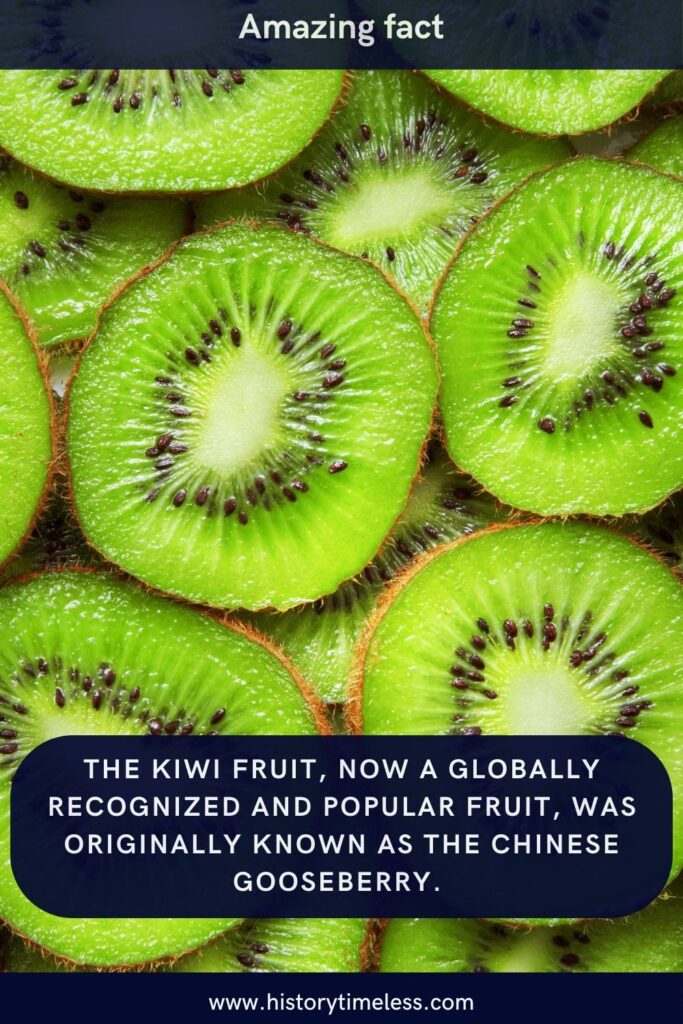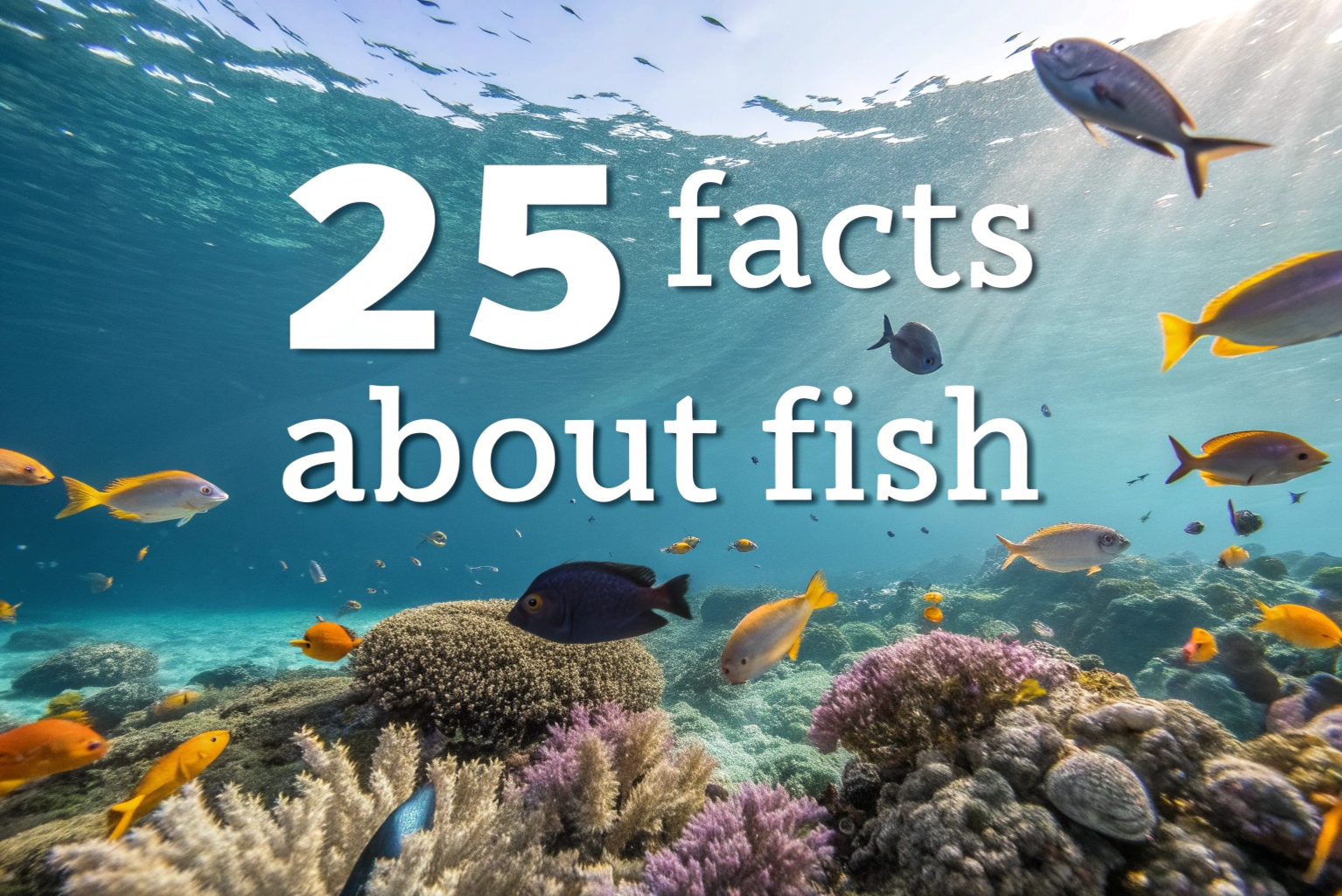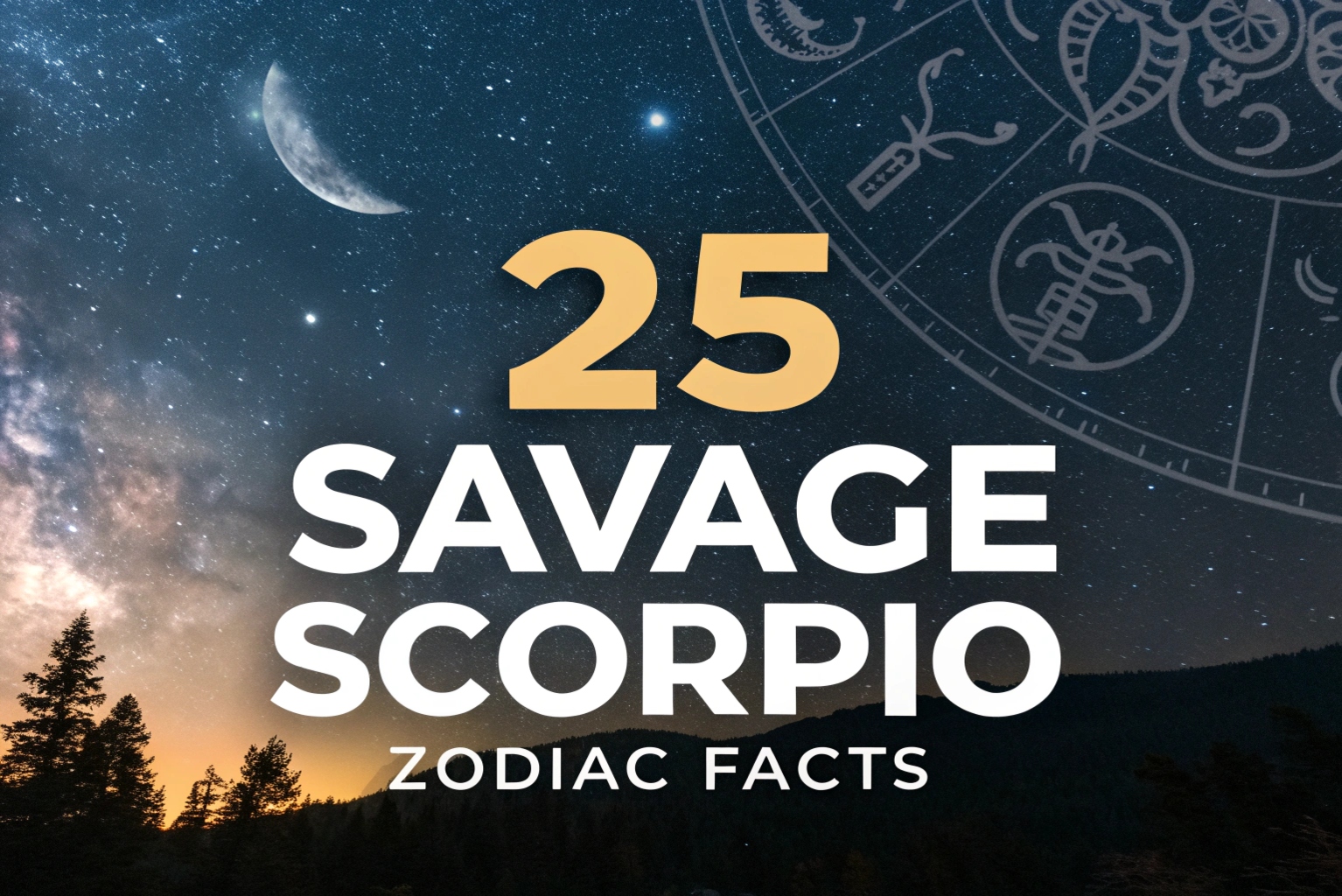Fruits, nature’s delightful treasures, are more than just tasty treats; they are nutritional powerhouses packed with vitamins, minerals, and fiber, essential for a healthy life.
From the familiar apples and bananas to the exotic mangoes and dragon fruits, the world of fruits is incredibly diverse and fascinating.
They play a crucial role in our diets and have been enjoyed by humans for millennia. But beyond their delicious flavors and health benefits, fruits hold many surprising secrets.
Get ready to expand your knowledge and appreciate the wonderful world of fruits with these 26 intriguing facts!
1. Fruits Are Botanically the Mature Ovaries of Flowers
When we enjoy a juicy fruit, we’re actually consuming the ripened ovary of a flowering plant. This botanical perspective highlights the fruit’s primary purpose: to protect the seeds and aid in their dispersal.
After a flower is pollinated, the petals typically wither and fall away, and the ovary at the base of the flower begins to swell and develop into what we recognize as a fruit.
This fascinating process is a key part of the plant’s reproductive cycle, ensuring the continuation of its species through these delicious and nutritious packages. So, next time you bite into an apple or a peach, remember you’re partaking in a botanical marvel!
2. Surprisingly, Bananas Are Botanically Classified as Berries
Botanically speaking, the term “berry” has a specific scientific definition that differs from our everyday understanding. A berry, in botanical terms, is a fleshy fruit produced from a single ovary of a single flower, and crucially, it contains seeds on the inside flesh.
Using this definition, bananas, with their multiple seeds (though often small and underdeveloped in modern cultivated varieties) and fleshy interior, technically fit the criteria to be classified as berries!
This might surprise many, as we often associate berries with smaller fruits like strawberries or blueberries, which, interestingly, are not true berries botanically.
3. Avocados Are Fruits, Not Vegetables, and Technically Large Berries
Often mistaken for vegetables due to their savory flavor and use in salads, avocados are indeed fruits. Furthermore, botanically speaking, avocados are also classified as single-seeded berries! Their creamy flesh surrounds a large single seed, fitting the berry definition surprisingly well.

This classification highlights the importance of understanding the botanical definition of fruits, which is based on the plant’s reproductive structure rather than taste or culinary use. So, the next time you enjoy guacamole, remember you’re indulging in a fruit, and a berry at that!
4. Strawberries and Raspberries Are Not True Berries in the Botanical Sense
While commonly referred to and sold as berries, strawberries and raspberries are not true berries according to botanical definitions. Instead, they are classified as “aggregate fruits.”
This means they develop from a single flower that has multiple ovaries. Each tiny “seed” on the outside of a strawberry, or each drupelet of a raspberry, actually comes from a separate ovary of the same flower.
This distinction highlights the nuanced world of botanical classification and how our everyday language for fruits can differ from scientific terminology.
5. Pumpkins, Squashes, and Cucumbers Are All Technically Fruits
Many fruits are mistakenly considered vegetables due to their savory flavor and culinary applications. Pumpkins, squashes (like zucchini and butternut squash), and cucumbers are all botanical fruits because they develop from the flower of the plant and contain seeds.
This often surprises people as we typically associate fruits with sweetness and desserts. However, botanically, the definition is based on the plant’s reproductive biology, not taste or how we use them in cooking. This broadens our understanding of what constitutes a fruit beyond just the sweet varieties.
6. Apples Float in Water Because They Are 25% Air
Have you ever noticed apples floating in a tub of water or during apple bobbing? This buoyant behavior is due to their composition: apples are approximately 25% air by volume!
This high air content makes them less dense than water, causing them to float. This characteristic is not only fun and interesting but also plays a role in apple harvesting and processing.
The air pockets within the apple contribute to its texture and crispness, making it a uniquely enjoyable fruit to eat.
7. Cranberries Bounce Because of Air Pockets Inside
Similar to apples, cranberries also have air pockets within their structure, which allows them to bounce! This unique characteristic is so prominent that cranberry farmers use bounce tests to check the ripeness and quality of their harvest.
Ripe cranberries have more air inside and bounce higher, indicating they are ready to be picked. This bouncing quality is also a fun demonstration of the fruit’s internal structure and is a distinctive feature that sets cranberries apart from many other fruits.
8. Lemons Contain More Sugar Than Strawberries
While lemons are famously tart and strawberries are known for their sweetness, surprisingly, lemons contain a higher sugar content per serving than strawberries.
However, the high citric acid content in lemons masks the sweetness, making them taste sour. Strawberries, although lower in sugar, have a lower acid content, allowing their natural sweetness to be more prominent.
This illustrates how the balance of sugars and acids in fruits determines our perception of their taste, and that sweetness isn’t solely determined by sugar quantity alone.
9. The Color of Fruits Comes from Pigments that are Beneficial
The vibrant colors of fruits are not just visually appealing; they are due to natural pigments that often have significant health benefits. For example, the red color in tomatoes and watermelons comes from lycopene, an antioxidant. Blueberries get their color from anthocyanins, also potent antioxidants.
Beta-carotene, which gives carrots and mangoes their orange hue, is converted to Vitamin A in the body. These pigments are not just for show; they are bioactive compounds that contribute to the nutritional value of fruits and vegetables, protecting us from cellular damage and promoting overall health.
10. Some Fruits, Like Pineapples, Contain Enzymes that Can Tenderize Meat
Certain fruits contain enzymes that have proteolytic properties, meaning they can break down proteins. Pineapples are a prime example, containing bromelain, an enzyme that can tenderize meat.
This is why pineapple juice is sometimes used as a marinade. Similarly, papayas contain papain, and figs contain ficain, all of which have protein-digesting capabilities.
These enzymes are not only useful in cooking but also play a role in the fruit’s natural processes and can even have potential health benefits related to digestion and inflammation.
11. Grapes are Technically Berries Growing on a Vine
We often think of berries as small, individual fruits growing on bushes or plants close to the ground. However, grapes, which grow in bunches on vines, are also botanically classified as berries.
This reinforces the botanical definition of a berry being related to its development from a single ovary of a single flower, regardless of size or growth habit.
Grapes, like other berries, have a fleshy interior and contain seeds, fitting the botanical criteria perfectly, even though they grow in a way that might seem different from typical berries.
12. The Seeds of Some Fruits, Like Apples, Contain Cyanide (in Small Amounts)
Apple seeds, along with the seeds of other fruits like pears, cherries, and peaches, contain amygdalin, a compound that can release cyanide when metabolized.
However, the amount of cyanide in a few seeds is very small and generally not harmful if accidentally ingested in small quantities by a healthy adult.
To consume a dangerous dose of cyanide from apple seeds, you would need to eat a very large quantity of seeds, which is unlikely and not recommended. This fact highlights that while some fruit parts contain naturally occurring toxins, the risk from normal consumption is minimal.
13. Tomatoes, Peppers, and Eggplants are Botanically Fruits, Often Used as Vegetables
Just like pumpkins and cucumbers, tomatoes, peppers (like bell peppers and chili peppers), and eggplants are also botanically classified as fruits because they develop from the flower and contain seeds.
However, in culinary contexts, they are often used and categorized as vegetables due to their savory flavors and typical use in salads and main courses.
This difference between botanical and culinary classifications can sometimes be confusing, but it simply reflects different ways of categorizing plants – one based on reproductive biology and the other based on culinary usage.
14. Kiwi Fruit Was Originally Called Chinese Gooseberry
The kiwi fruit, now a globally recognized and popular fruit, was originally known as the Chinese gooseberry.

It was renamed “kiwi fruit” in New Zealand in the 20th century for marketing purposes, drawing a connection to the native kiwi bird of New Zealand, which shares a similar brown and fuzzy appearance.
This name change significantly boosted the fruit’s popularity and export success. It’s a fascinating example of how branding and marketing can influence the perception and global adoption of a fruit.
15. The Word “Orange” Originally Referred to the Fruit, Not the Color
Interestingly, the word “orange” in the English language originally referred to the fruit itself, and only later was adopted to describe the color. Before oranges were commonly known in English-speaking regions, there was no specific word for the color we now call orange.
People would describe it using terms like “red-yellow.” The fruit’s introduction and popularity eventually led to the color being named after it.
This linguistic fact highlights the impact of fruits on our language and how they can shape our vocabulary.
16. Dates are One of the Oldest Cultivated Fruits
Dates are among the oldest fruits cultivated by humans, with evidence of date palm cultivation dating back thousands of years in the Middle East and North Africa.
They have been a staple food in these regions for centuries, valued for their sweetness, nutritional value, and ability to be stored for long periods.
Date palms are well-adapted to arid climates, making dates a crucial food source in desert regions. Their long history of cultivation underscores their importance to human civilization and agriculture.
17. Durian is Known as the “King of Fruits” in Southeast Asia, Despite Its Strong Odor
Durian is a fruit native to Southeast Asia and is often hailed as the “King of Fruits” in the region due to its rich, complex flavor and creamy texture.
However, it is also notorious for its pungent and often overpowering odor, which some people find repulsive while others find intensely appealing. Due to its strong smell, durian is even banned in some public places in Southeast Asia.
This fruit is a perfect example of how taste and smell are subjective and culturally influenced, with durian being a highly prized delicacy for many despite its controversial aroma.
18. Star Fruit (Carambola) Slices Look Like Stars When Cut Crosswise
Carambola, commonly known as star fruit, gets its name from its distinctive shape. When sliced crosswise, the fruit naturally forms perfect star shapes, making it visually appealing and a popular garnish.
This unique shape is not only aesthetically pleasing but also makes star fruit easily recognizable and memorable. The fruit itself has a slightly tart and tangy flavor, adding to its appeal as both a decorative and edible fruit.
19. Brazil Nuts Are Not True Nuts, But Seeds from a Fruit Capsule
Despite being called “nuts,” Brazil nuts are botanically seeds, not true nuts. They grow inside a large, hard, woody fruit capsule that can weigh several pounds and contains around 10-20 Brazil nut “seeds.”
These fruit capsules grow on massive Brazil nut trees in the Amazon rainforest. Harvesting Brazil nuts is a unique process as the fruit capsules are collected from the forest floor after they naturally fall.
This botanical distinction highlights the difference between culinary and scientific classifications, similar to the berry examples.
20. Figs Are Technically Inverted Flowers
Figs are unique fruits because what we consider the “fruit” is actually an inverted flower. The fig “fruit” is a syconium, a fleshy receptacle that encloses hundreds of tiny flowers inside.
These flowers are pollinated by specialized fig wasps that enter through a small opening at the tip of the fig. This unusual pollination mechanism and floral structure make figs botanically fascinating and distinct from most other fruits. The crunchy “seeds” inside a fig are actually the achenes, which are the true fruits containing the seeds.
21. Passion Fruit’s Pulp is Filled with Seeds Enclosed in Juicy Arils
Passion fruit is known for its intensely aromatic and flavorful pulp, which is actually comprised of numerous seeds, each surrounded by a juicy, pulpy sac called an aril.
It’s these arils, attached to the seeds, that we eat when we enjoy passion fruit. The seeds themselves are also edible and add a slight crunch to the texture.
This unique structure of pulp surrounding seeds within arils is characteristic of passion fruit and contributes to its distinctive sensory experience.
22. Watermelon is Considered a Berry by Some Botanical Classifications
While we often think of watermelons as large, distinct fruits, some botanical classifications categorize them as a type of berry called a “pepo.”
A pepo is a berry with a hard rind, like watermelons, pumpkins, and cucumbers. This classification is based on the watermelon’s development from a single ovary, fleshy interior, and seeds embedded within the flesh, aligning with the broader botanical definition of a berry. So, in a botanical sense, this giant, refreshing summer fruit can also be considered a berry.
23. Mangoes are Related to Cashews and Pistachios
Surprisingly, mangoes are botanically related to cashews and pistachios! They all belong to the Anacardiaceae family, also known as the cashew family.
This family is characterized by producing fruits with a resinous sap and often having a single seed within the fruit.
This botanical relationship is not immediately obvious from the appearance or taste of these fruits and nuts, but it highlights the underlying connections within plant families and their evolutionary history.
24. Rambutan’s Name Comes from the Malay Word for “Hairs”
The rambutan fruit, popular in Southeast Asia, gets its name from the Malay word “rambut,” which means “hairs.” This name is highly descriptive as rambutan fruits are covered in soft, fleshy spines or hairs on their outer skin. These hairs are a distinctive characteristic of the fruit and contribute to its unique appearance. The inside of the rambutan is a sweet and juicy white or translucent flesh similar in texture to a grape, making it a delightful tropical treat.
25. Acai Berries Were Traditionally a Staple Food in the Amazon Region
Acai berries, now globally recognized as a superfood, were traditionally a staple food for indigenous populations in the Amazon rainforest.
These small, dark purple berries grow on acai palm trees and have been a significant part of the diet and culture of Amazonian communities for centuries.
They are rich in antioxidants and nutrients, and their traditional use highlights the deep connection between indigenous people and the natural resources of the Amazon.
26. The Average Person Eats About 100 Pounds of Fruit Per Year
On average, a person consumes roughly 100 pounds of fruit each year. This number can vary depending on dietary habits and geographic location, but it gives a general idea of fruit consumption.
While health organizations often recommend even higher fruit intake for optimal health, 100 pounds still represents a significant contribution of fruits to the average diet. This fact underscores the importance of fruits as a regular and substantial part of human nutrition worldwide.
Explore more surprising truths:
25 Savage Scorpio Zodiac Facts That’ll Shake Your Soul Hard!
25 Facts About Flower That’ll Make You See Them Differently!
20+ Insane Facts About Animals That Defy Belief!
15+ Interesting World Facts: Say ‘Wow’ to These Discoveries!




